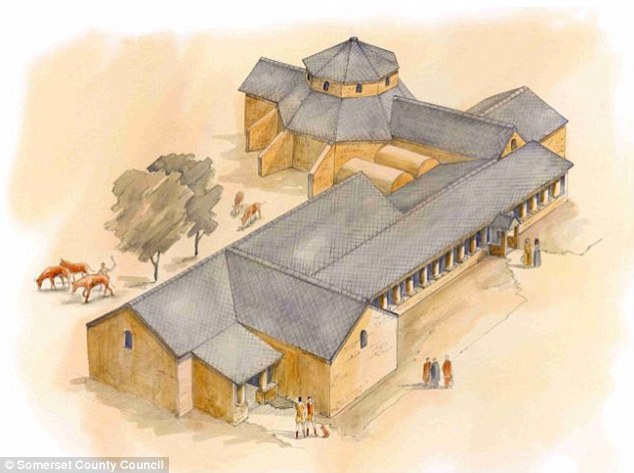Archaeologists have discovered an extravagant Roman palace in the Somerset countryside. They believe that the palace was owned by someone possessing great wealth and power during the 5th century AD.
Experts say that the home was worth the equivalent of $10 million (around £7 million) and it would most likely have been a “second home” to someone in the upper echelons of Roman society.
However, this is not the first time someone has studied the site: in the 1960s, schoolmaster Leonard Hayward took his pupils to the villa so they could excavate the Roman house. Decades later, a team of researchers has returned to study the house in much more detail reports the Mirror.
Dr. James Gerrard, the archaeologist leading the excavation, claimed the villa was owned by a Roman billionaire. One of the finds was a luxurious octagonal pool that was surrounded by an elaborate mosaic. Dr. Gerrard stated that the house was most likely a holiday home or rural retreat.
According to Dr. Gerrard, “The people who lived here were very high status, Romanized Britons. We think the population of late Roman Britain was about four million people and there were only about 2500 villas.
What we’re looking at here is in modern terms equivalent to David Beckham’s house. The owner was probably on the town council at Lichester nearby.
They spent their money on a flash house. It probably had running water. They were from the very top two or three percent of society. Most people were living in two or three rooms with an oven.”
The villa is still be excavated by his team in a joint operation with the South Somerset Archaeological Research Group, they are still finding very interesting things about the building.
The researchers ran across a channel that was next to two giant hamstones that had been burnt; they think that they may have been used as a stoke hole for the heated floors of the villa. They also uncovered a beautiful tiled floor.
The researchers stated: “It was a busy day on site today but the team managed to make a brilliant discovery of a tessellated floor. This pavement is in a room that occupies an area that Hayward had thought was outside of the villa entirely.”
The villa was first discovered in 1945 and has had several excavations at the site since then.
Dr. Gerrard commented that “Whoever built it employed some really dodgy builders; you can clearly see the buttresses that were put in later to support the subsiding tower.”
The last time this villa saw any use was most likely around the 5th century, which was a very mysterious time in Somerset: it was after the Romans left but before the Anglo-Saxons arrived. Octagonal architecture was very common in Roman times; it was common to see temple buildings built like this in the 3rd and 4th century and in the 5th century buildings of this shape were used in Italy as Christian baptisteries.
“For me, the interesting part will be trying to figure how this building was used,” said Dr. Gerrard.
“It’s a nice country house that was later subdivided into rooms and had a working iron furnace inserted into one of the mosaics. This change in use probably dates to the early 5th century, when Roman influence in Britain was waning.”
The team will be using the newest scientific techniques and technologies to get an idea of the type of metal working that was being carried out.
“We hope to be able to find out more about the economy and diet of the inhabitants as well. Leonard Hayward collected 106 bones which he thought might be ox, digging long before detailed scientific analyses.
We hope to find more animal bones, burnt seeds, and snail shells which will allow us to use radiocarbon dating that wasn’t available in the 1950s and 1960s and to assess the economy and environment of the villa” stated Dr. Gerrard.
